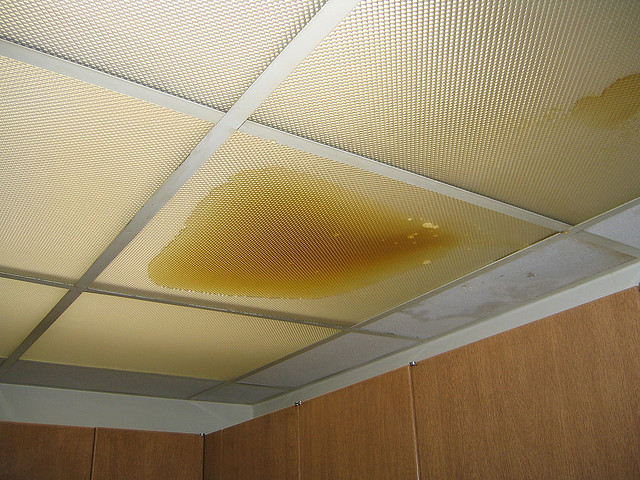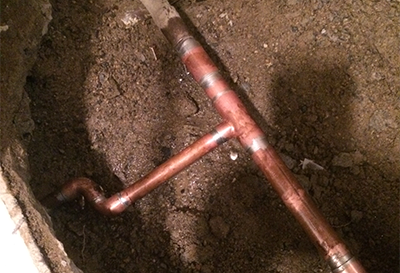Guide To Water Leak Discovery In The House
Guide To Water Leak Discovery In The House
Blog Article
The writer is making several great pointers relating to Finding hidden leaks as a whole in this article underneath.

Early detection of leaking water lines can minimize a possible calamity. Apart from saving you money, it will decrease the worry and also frustration. The moment you locate a leakage, calling your plumber for fixings is the most effective service. Nonetheless, some tiny water leaks might not show up. Right here are some hacks that help if you can not find it with your naked eyes.
1. Check Out the Water Meter
Every house has a water meter. Examining it is a proven manner in which aids you find leakages. For starters, switch off all the water resources. Make sure no person will certainly purge, utilize the faucet, shower, run the cleaning device or dishwasher. From there, go to the meter and also watch if it will alter. Because no one is using it, there need to be no motions. That indicates a fast-moving leak if it relocates. Similarly, if you find no changes, wait a hr or 2 and also inspect back once more. This implies you may have a sluggish leak that could even be below ground.
2. Inspect Water Consumption
If you identify abrupt modifications, despite your intake being the very same, it indicates that you have leaks in your plumbing system. An abrupt spike in your expense indicates a fast-moving leakage.
On the other hand, a consistent increase on a monthly basis, even with the same behaviors, shows you have a slow leakage that's likewise gradually intensifying. Call a plumber to completely examine your home, particularly if you really feel a cozy area on your flooring with piping beneath.
3. Do a Food Coloring Test
When it comes to water intake, 30% comes from bathrooms. If the color in some way infiltrates your dish during that time without flushing, there's a leak in between the storage tank and bowl.
4. Asses Exterior Lines
Do not neglect to check your exterior water lines also. Test spigots by connecting a yard pipe. Must water leak out of the link, you have a loose rubber gasket. Change this and ensure all connections are limited. If you've obtained an automatic sprinkler, it will help get it properly analyzed and preserved yearly. One small leakage can squander lots of water and also spike your water expense.
5. Check and also Assess the Scenario
Home owners need to make it a behavior to examine under the sink counters as well as even inside cabinets for any bad odor or mold and mildew development. These two warnings suggest a leak so prompt focus is needed. Doing routine inspections, also bi-annually, can save you from a major issue.
If you recognize your home is currently old, keep a watchful eye on your heating systems, hoses, pipelines and so on. Check for discolorations and also weakening as a lot of home appliances and also pipelines have a life span. They will also naturally degrade as a result of damage. Don't wait for it to rise if you presume leaking water lines in your plumbing system. Call a specialist plumber today so you don't wind up with a horrible mess in your home.
Early discovery of dripping water lines can mitigate a prospective calamity. Some little water leaks may not be visible. Inspecting it is a proven means that helps you discover leaks. One small leak can lose heaps of water and also increase your water costs.
If you suspect dripping water lines in your plumbing system, do not wait for it to rise.
How to Know If Your Home Has a Hidden Leak
Water Meter Reveals Inexplicable Water Usage
If you’d like to test whether or not there’s a leak somewhere in your home, you can do this using your water meter. Here is how to conduct the test:
Don’t use any water in your home for at least 30 minutes; this also means not turning on faucets or water-using appliances.
Go outside, and check your water meter for activity.
If your water meter shows that there was activity, even though no one was using any water, this proves that there is a leak in your home.Visible Mold or Mildew Growth
Leaks behind walls create moist, dark environments that allow mold and mildew to grow and thrive. Eventually, you might see mold growth forming on the wall closest to a hidden leak.
If mold is growing in an area that receives a high amount of moisture, such as a bathroom, it may simply be an indication that better ventilation is needed. However, if you see mold growth on a wall or the ceiling in an area where you would not expect, you probably have a hidden leak.
Musty, Mildew Odor
Sometimes you might not be able to see the mold or mildew that is growing as a result of a leak. However, the smell can give the problem away just as easily. If you catch a whiff of something musty, there’s a good chance that old water is collecting somewhere in your home that you can’t see.
Stained/Warped Walls, Ceilings, or Floors
When your home soaks up water, a variety of red flags can become visible, including ceiling stains, bubbling drywall, warped walls, and sagging floors. While these issues can be caused by excess humidity, they can also be signs that a pipe or plumbing connection has started leaking behind your walls.
Inexplicably High Water Bill
After a while, you get a general sense for what your water bill should be. If you own a pool or sprinkler system, your bill will tend to be higher during summer. However, if you receive a water bill that seems especially high, and you can’t figure out what caused it, then you may have a hidden leak somewhere that’s increasing your bill.
https://www.plumbingjoint.com/blog/2019/july/how-to-know-if-your-home-has-a-hidden-leak/

We had been introduced to that article about Finding hidden leaks from a good friend on our other site. Do you know about somebody who is occupied with the topic? Please feel free to share it. We appreciate reading our article about Hacks to detect leaks.
Report this page